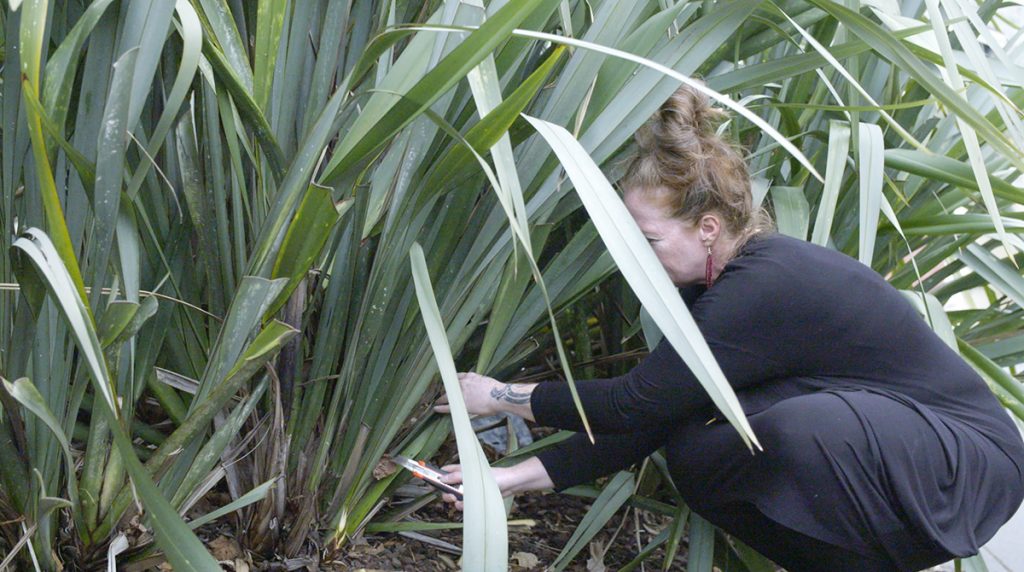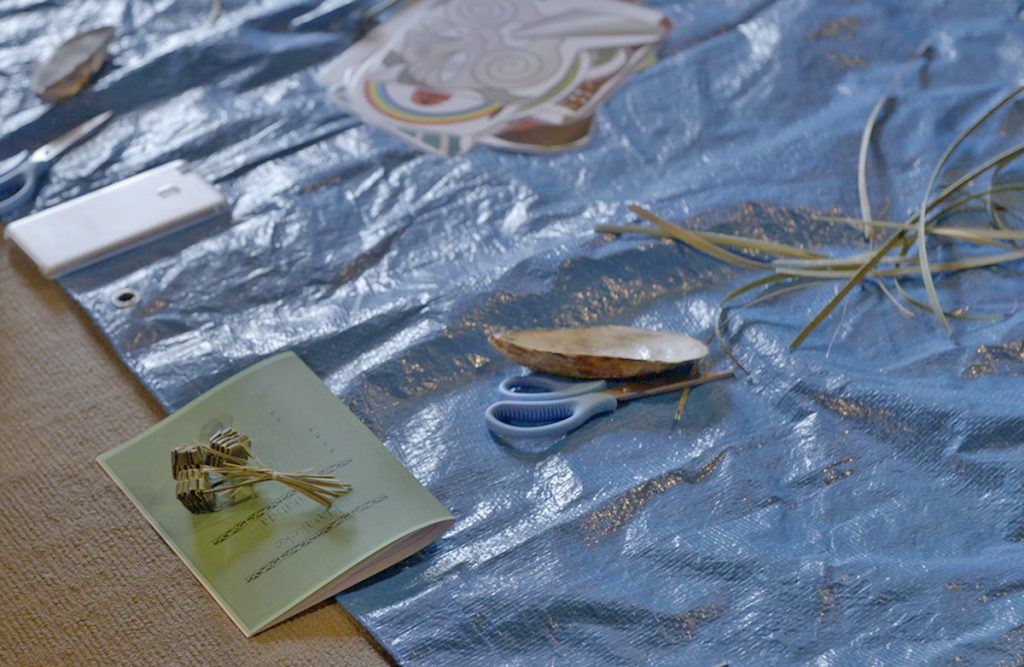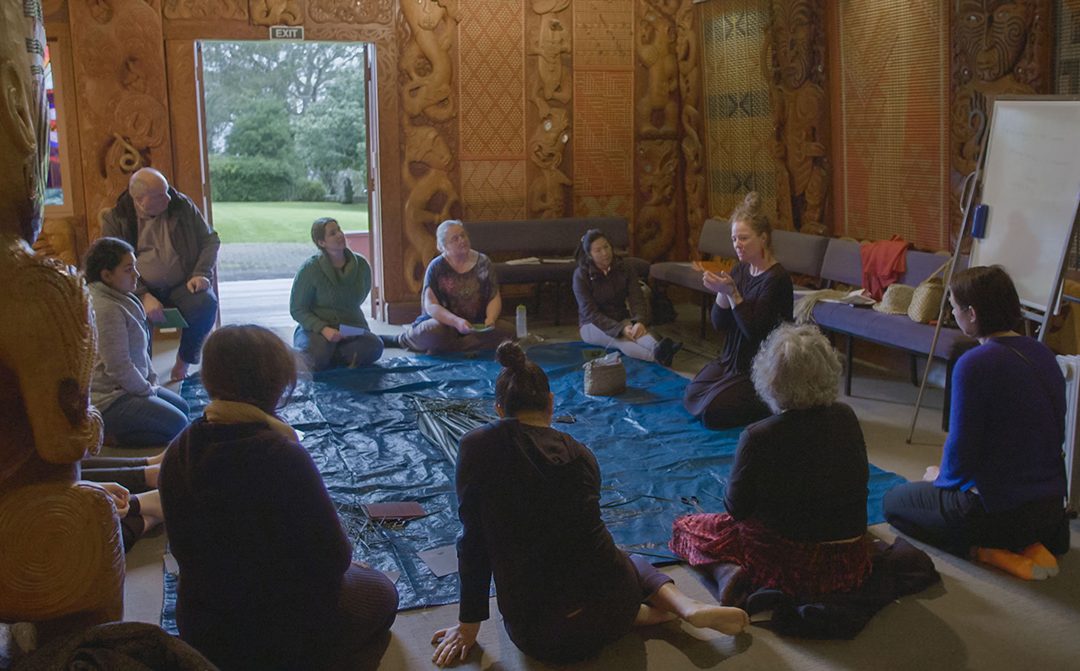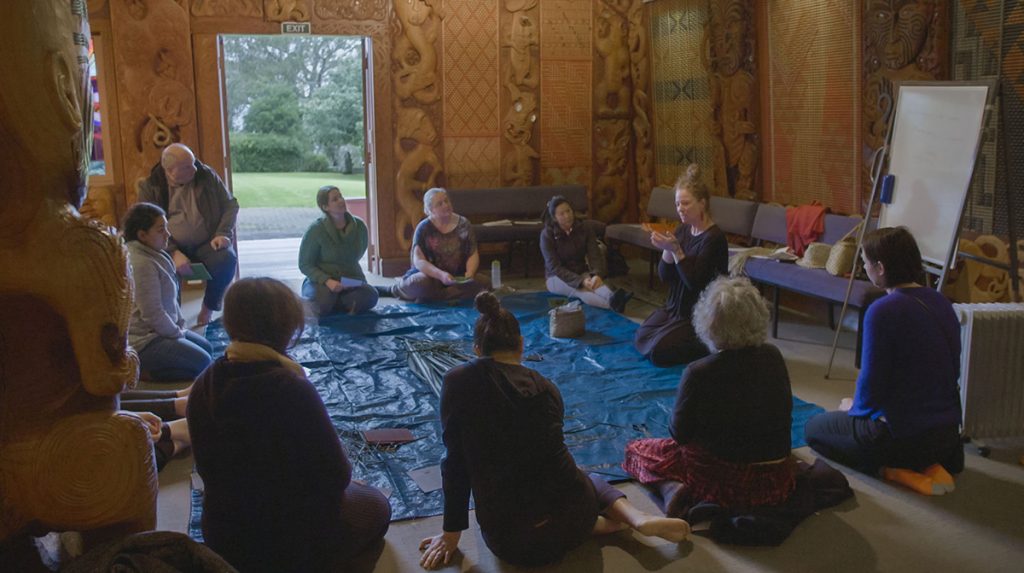This workshop ‘to explore a different way to think about writing as a process of harvesting, preparing, creating and presenting knowledge’ was a delight. An introduction to traditional harakeke (flax) weaving in the evocatively beautiful Waipapa marae shone a refreshing light on the purpose, process and product of writing.
Attendees came from a wide variety of disciplines and ranged from postgraduate students to senior academics. Some were enticed by the marae. For others, the flyer suggested affinities with their research and teaching.

The story from Maori mythology of the three baskets of knowledge is depicted in a carving beside the entrance to the marae. (Video still by Billy Wong, Media Productions)
“How can you gather, bring together and present ideas without a pen in sight?” asked Hinekura Lisa Smith, who facilitated the workshop. The rich stories told by the marae’s structure, carvings and tukutuku panels provide ample evidence that writing is not the only way to tell stories and that we need not only to present a story, but to develop eyes to see it unfold. How do we understand, see, write, present?

Hinekura gathers some flax from outside the marae. (From video still by Billy Wong, Video Productions)
To illustrate the need to acknowledge and respect our sources, we accompanied Hinekura outside, where – after a karakia (Māori incantation) – she harvested some flax leaves. By taking only the outer leaves, Māori protect the plant’s future health. (They think of each set of flax leaves as a whanau (family group). The children (inner shoots) are surrounded by the parents and grandparents. Children and parents are never harvested.) Such stories have both a spiritual and commonplace purpose.

The three baskets of knowledge woven by a workshop participant. (From video still by Billy Wong, Media Productions)
Our task was to weave the three baskets of knowledge – the kete-aronui holding all the knowledge that could help mankind, the kete-tuauri holding the knowledge of ritual, memory and prayer and the kete-tuatea which contained knowledge of evil or makutu, which was harmful to mankind.
As we wove, we helped each other and talked about our writing. I can’t report on much of the conversation. Because the process was so unfamiliar it didn’t really free me up to think and talk about my writing in a different way. I was one of the few who didn’t manage to create an exquisite little group of baskets within the timeframe.
So what were my take-home messages? Establishing the foundation to build on was the hardest part. I should have kept the purpose in mind – to create three baskets of knowledge – rather than being so thrilled that my first basket was developing well that I never progressed beyond that. Deadlines are important even in a situation like this! When you are making something, it is important to think who it is for. It is traditional to give your first weaving away. One of the students commented that she wasn’t just working for herself, she was working for her family and to make an impact that would benefit others.


Lovely story about another way of learning and passing on knowledge.